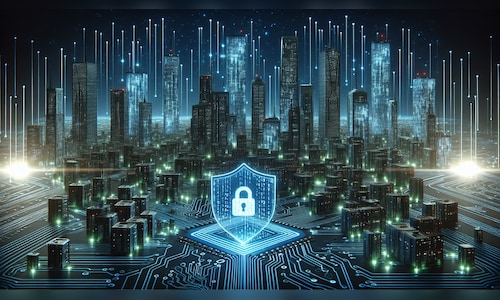The conversation about whether organizations are prepared to face the AI Hydra (if one head is cut off, several more will appear) and, if not, how they can protect themselves has never been more relevant than in October, which is National Health Month. Cybersecurity Awareness.
Anand Tiwari, partner at Deloitte India, says that in fact, organizations are increasingly revamping their cybersecurity measures, driven by a combination of factors. “Organizations are forced to invest in advanced cybersecurity measures due to stricter compliance regulations, increased cyber threats, and ongoing digital transformation.”
Tiwari said that as enterprises adopt cloud services, IoT and artificial intelligence technologies, their attack surfaces are expanding, increasing the need for improved cybersecurity frameworks. It said that about “84% of organizations are focusing on digital transformation initiatives, while about 81% are prioritizing regulatory compliance,” citing 2023 statistics from the Data Security Council of India.
Alarming increase in ransomware incidents
One of the biggest (and most persistent) threats facing any organization is a ransomware attack, an incident in which a hacker literally demands a ransom for the company by blocking its access to crucial organizational assets. Payment is usually demanded in cryptocurrency, making it impossible to locate the attacker. And there is no guarantee that the organization will regain access to sensitive data even if it pays the ransom.
Tiwari said the increase in ransomware incidents has been substantial and alarming. Reports indicate a staggering “150% increase in ransomware attacks in India in 2023 compared to the previous year.” A notable “73% of medium and large organizations have reported being attacked,” and 44% of those affected paid ransoms ranging from $100,000 to $500,000.
Tiwari highlighted the sophistication of these attacks, explaining that they involve “double and triple extortion tactics and the rise of ransomware as a service (RaaS),” which has created a higher risk environment, forcing organizations to strengthen their cybersecurity postures.
Comprehensive cyber defense strategies
Tiwari said companies are also taking a multi-layered approach to revamp their cyber defense mechanisms. “Organizations are integrating artificial intelligence and machine learning technologies, improving endpoint security, and implementing comprehensive employee training programs focused on ‘security by design.'” Additionally, collaborating with external cybersecurity experts to obtain advanced threat intelligence is becoming essential, he said.
Investments in data protection and compliance
Companies are investing substantially in several key areas to protect sensitive data and comply with the Digital Personal Data Protection Act (DPDP). Tiwari noted: “Investments in encryption technologies, data loss prevention (DLP) solutions and the establishment of data governance offices are critical to ensuring compliance with regulations.” Implementing Zero Trust access solutions and third-party risk management are also vital components of their strategies, Tiwari added.
The role of continuous cyber surveillance
Round-the-clock cyber surveillance is becoming increasingly vital to reducing cyber threats. Continuous monitoring enables “immediate threat detection and rapid response, improving overall threat intelligence and ensuring regulatory compliance,” Tiwari explained. This proactive approach significantly reduces the risk of security incidents.
Benefits of strong cybersecurity
Tiwari said organizations that invest in strong cybersecurity defenses enjoy numerous benefits, including “data protection, increased customer trust, regulatory compliance and business continuity.” Strong cybersecurity also provides a competitive advantage, improves incident response, and fosters better partner relationships.
Unique challenges for medium and large organizations
Medium and large organizations face unique challenges due to their extensive IT infrastructures and the valuable data they contain. As cyber threats become more sophisticated, Tiwari said, “These organizations must address the financial impacts, regulatory compliance challenges and potential reputational damage.”
Tiwai concluded by saying that as the cybersecurity landscape evolves, organizations recognize the importance of investing in advanced security measures to safeguard their operations and maintain trust with stakeholders; A proactive and comprehensive approach to cybersecurity is more critical than ever.
Also read: Airtel Business partners with Fortinet to launch ‘Airtel Secure Internet’ to improve cybersecurity
Disclaimer:
The information contained in this post is for general information purposes only. We make no representations or warranties of any kind, express or implied, about the completeness, accuracy, reliability, suitability or availability with respect to the website or the information, products, services, or related graphics contained on the post for any purpose.
We respect the intellectual property rights of content creators. If you are the owner of any material featured on our website and have concerns about its use, please contact us. We are committed to addressing any copyright issues promptly and will remove any material within 2 days of receiving a request from the rightful owner.

